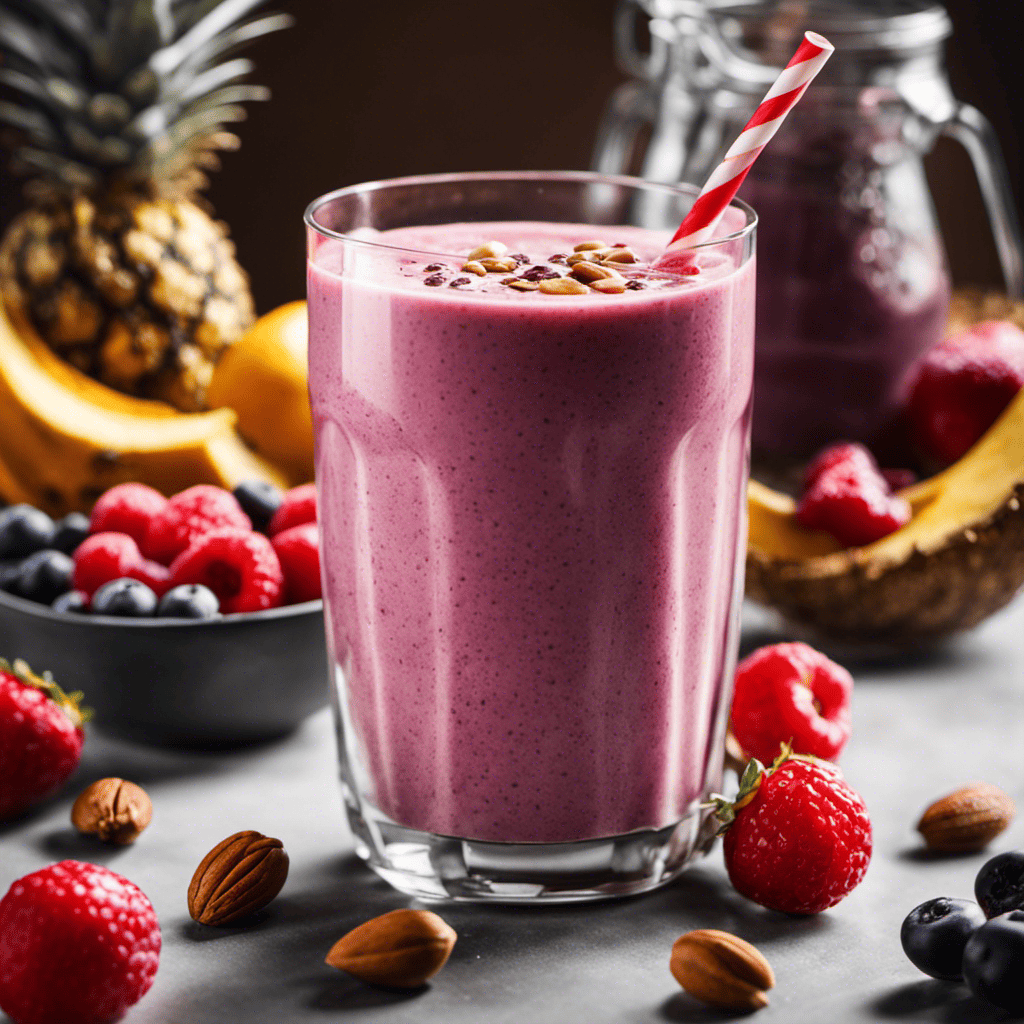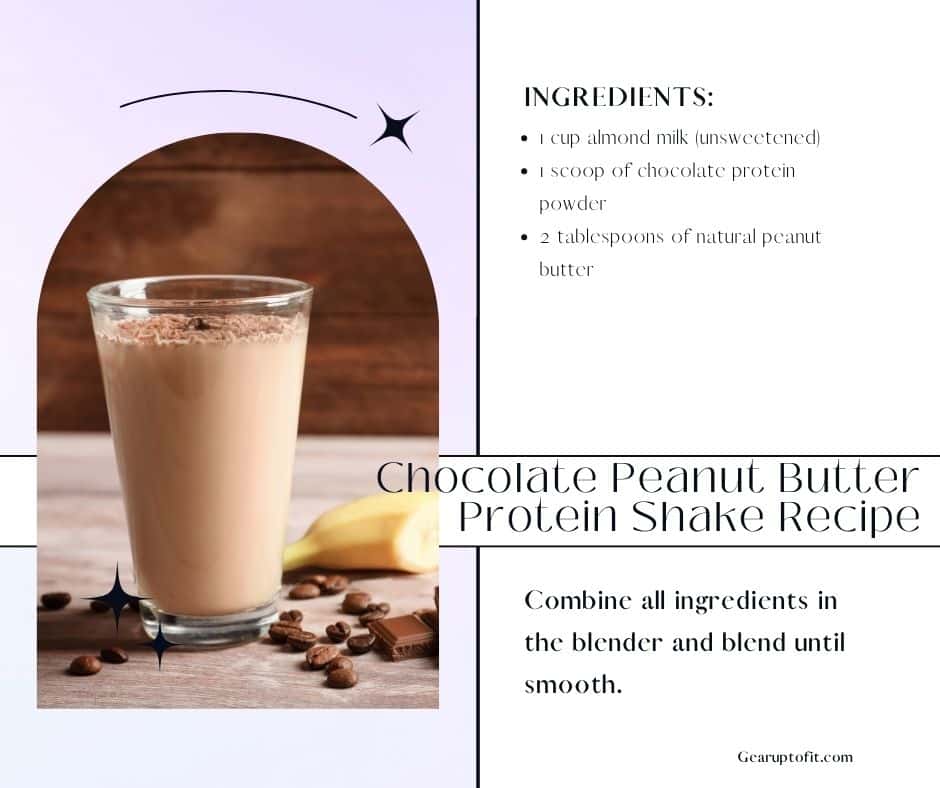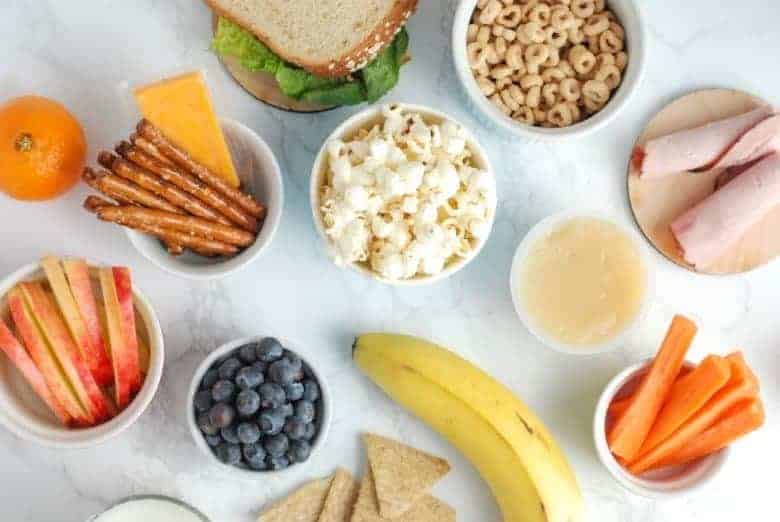You know what goes well with sports? Snacks! But not just any snack. You want something that’s nutritious and energizing, yet not so heavy that it slows down your child before the next game or practice. To help you out, we’ve put together a list of 21 delicious and nutritious snacks for kids. From munchables to eating on the go-to sweet treats that are good for after-school practice sessions, these will keep your athlete fueled and ready to play!
Carrot and hummus

Carrots are a great source of vitamin A, which helps develop bones and teeth. In addition to being a good source of fiber and protein, hummus also provides iron, which is crucial for preventing anemia.
Apple slices with peanut butter
- Peanut butter is an excellent protein, vitamin E, and B6 source.
- Peanut butter contains niacin and pantothenic acid (vitamin B5).
- It’s also a good source of magnesium, manganese, and copper.
Trail mix

Trail mix is a great choice for a sports snack. It’s a good source of healthy fats and protein; it won’t spoil like other snacks like cookies or chips.
Here are some tips for making the most of trail mix:
- Make sure your trail mix has nuts, seeds, and dried fruit to get enough protein and fiber from the whole grains. You can also add cocoa nibs (powdered chocolate) to boost your trail mix’s protein and antioxidants.
- Don’t forget that fruit contains natural sugar so avoid adding too much sweetened puffed cereal or chocolate chips to your trail mix as they can make it unhealthy or fattening if eaten too often in large amounts. Instead, choose dried fruit with no added sugar, such as raisins, cranberries or apricots instead!
Dried fruit
Dried fruit is a great choice for kids because it contains fiber and vitamins. Dried fruits like raisins, cherries, apricots, and dried peaches are healthy snacks that provide energy during sports or after school.
The best part is that they are also delicious! The tangy flavor of the fruit can be a real treat for your children when they are tired of eating only vegetables. Mix dried fruits with nuts and seeds to make a trail mix or snack mix for your child’s lunchbox. Dried fruits add nutrition without adding too many calories, making them perfect for after-school snacking (or an easy dessert).
Fresh fruit

Kids should eat fruits and vegetables to get the necessary vitamins, minerals, and fiber. Fruit is also a good energy source, so it’s a healthy snack for kids. It has very few calories and fat.
Fruits like bananas are easy to carry in your bag (if you don’t have one of those fancy animal-themed sports bags that have pockets), but you can also throw an apple or orange into your child’s lunchbox. It’s best if they’re fresh – but frozen fruit is fine too!
A slice of watermelon will do the trick, too – just make sure not to let it sit out for too long after cutting through it because then some bacteria may appear on top as well as inside where there was no air before slicing open this delicious treat at home or outdoors nearby when playing soccer games with friends nearby for example 🙂
Celery sticks with peanut butter or cream cheese and raisins
Celery sticks with peanut butter or cream cheese and raisins
Peanut butter, raisins, and celery are a great combination. Add chocolate chips for a delicious twist! Try adding cinnamon to the peanut butter instead of plain salt for extra fun.
If you’re looking for other healthy snack ideas for kids that don’t involve food on the run, here are some more options:
Bagel with cream cheese or peanut butter

Bagels are a good source of carbs, fiber, calcium, iron, and vitamin B6.
- Bagels are a great source of carbohydrates because they contain important nutrients like fiber and magnesium that your body needs to function properly. Carbohydrates are also the main form of energy your body uses during exercise and can help you stay energized throughout your workout session.
- Fiber helps keep you full longer, so it’s less likely that you will feel hungry between meals or snacks. Fiber also helps lower cholesterol levels by binding with bile acids in the intestine before they get absorbed into the bloodstream. The result is an increase in fat excretion from your body!
- Calcium builds strong bones and teeth by helping make new bone tissue when needed, providing structural support for existing bone tissue, and controlling muscle contraction (i.e., muscle function). It also supports nerve function by aiding in transmission rates at synapses (the spaces where neurons communicate) within our nervous system, which ultimately affects learning abilities such as memory recall skills; therefore, increasing mental alertness levels while decreasing fatigue levels so athletes can stay focused longer on their respective sport activities without feeling mentally drained afterward!
Hard-boiled eggs
Hard-boiled eggs are a great source of protein, which helps build muscle and keep your body running smoothly. To make them, fill a pot with about two inches of water and bring it to a boil. Place six peeled hard-boiled eggs in the pot and set the timer for 10 minutes. When the timer goes off, remove the eggs from the water and place them in an ice bath (fill another large bowl with ice water). Let them sit there for 5-10 minutes to cool down before peeling or slicing.
You can serve them as an afternoon snack; cut each boiled egg in half or quarters so you can eat it easily without getting burned by the hot yolk! If you want something more flavorful than plain boiled egg whites, try adding salt and pepper to taste before serving 🙂
String cheese and grapes
Let’s start with a classic: string cheese and grapes. Grapes are a rich source of antioxidants, fiber, and vitamin C. And they pair well with cheese, which is also high in calcium. But don’t just limit yourself to plain old string cheese—try a variety of cheeses like cheddar, brie or goat’s milk. Or try them with crackers or pretzels for extra crunch (or even sprinkle on some cinnamon).
String Cheese and Grapes Recipe
Ingredients:
- 1 cup red seedless grapes (or other small, sweet variety)
- 8 oz package of string cheese
Popcorn
Popcorn is a great source of fiber, which helps keep your digestive tract healthy. It also contains potassium and vitamin B6. The latter is important for the metabolism of sugars and carbohydrates, while the former plays an important role in maintaining normal blood pressure levels.
Popcorn also contains a good amount of vitamin E, an antioxidant that promotes healthy skin and hair growth.
Yogurt tubes or squeezable yogurt pouches.
Yogurt tubes or squeezable yogurt pouches are a great way to keep your child’s tummy full and happy. Yogurt is packed with protein and calcium, which helps build strong bones. Some yogurts also contain probiotics, which help support a healthy digestive system. Yogurt tubes can be frozen and used as a cool treat during hot summer days. These snacks are also great for packing in lunches!
Fruit leather.
Fruit leather is a healthy snack, and it’s easy to make. The only ingredients you need are fruit, sugar and water.
Fruit leather is a good source of fiber and vitamins A and C. It’s also a good source of antioxidants (which fight free radicals), potassium, calcium, and other nutrients that help with growth and development. You can even find varieties made with no artificial ingredients!
Muffins.
Muffins are a great source of fiber, calcium and iron. They can also be made with whole grains, which is good for your heart and digestive system. You can add fruit to the batter to make them healthier and tastier.
Granola bars.
Granola bars are a great snack for kids because they contain vitamins, minerals, and fiber. But remember: not all granola bars are created equal. Some granola bars are loaded with unhealthy ingredients like high fructose corn syrup and hydrogenated oils that can cause weight gain, raise cholesterol levels, and increase your risk of heart disease over time.
To avoid getting stuck with the unhealthy kind, read the nutrition label before buying any packaged food product. A good start is looking at how many grams of sugar a serving contains (less than 5g is ideal). If you want to make your homemade granola bars instead of buying them pre-packaged at the grocery store or health food store, here’s an easy recipe:
- 3 cups old-fashioned oats (not quick oats)
- 1 cup chopped nuts (cashews or almonds work well)
- 1 cup dried fruit (raisins or cherries)
Sports drinks (only for very active kids).
- Sports drinks are not necessary for active kids. Kids don’t need to drink a lot of water, and they can get their fluid from food, so they shouldn’t be drinking sports drinks—which have a lot of sugar and calories—if they are just playing around outside or doing something low-key like having a dance party at home.
- Water is better than sports drinks. Drinking plenty of water is always important, but it’s especially important when exercising or playing sports (or doing anything else that gets you sweaty!). When we sweat during exercise, our bodies lose electrolytes (sodium and potassium), which help regulate our blood pressure and keep our muscles working properly.
- You may want to consider buying reusable bottles with your child if you’ll make them carry their own bottle all the time. This way, you won’t end up with paper cups everywhere!
Whole-wheat crackers.
Whole-wheat crackers are a great source of fiber, protein, iron, and calcium. Whole grain foods provide many health benefits, such as increasing energy levels and promoting better digestion.
What are whole grains?
Whole grains contain the entire grain kernel (the bran, germ, and endosperm). These three parts of the grain each have their own nutritional profile:
- Bran – the fiber-rich outer part of the kernel; good for digestive health.
- Germ – contains lots of vitamins A and E; good for skin health.
- Endosperm – starchy center that provides energy
Popcorn cakes (our twist on Rice Krispies treats).
Popcorn cakes are a great source of fiber and when made with low-fat popcorn, they’re also a good source of potassium. The kids can help you make them—and will be proud to share them with their friends at school or in sports practice.
Not only that, but these snacks provide good amounts of folate and magnesium (which helps strengthen bones), iron (helps transport oxygen throughout the body), and even protein!
These aromatic snacks will keep your kids full between practices.
Are you looking for a guilt-free snack packed with nutrients and totally delicious? We’ve got your back! The following snacks are all nutritious, easy to pack, and perfect for kids who are hungry between practices.
- Fruit salads: This is one of the most versatile snacks around and one of our top picks for sports day snacks. A ready-made fruit salad can be bought at the supermarket or made at home by chopping up some fresh fruit (grapes, mandarin oranges, and bananas go particularly well). It’s easy to carry in a bag or water bottle when you’re on the move.
- Mixed nuts: Nuts have a high-fat content but also contain a lot of protein, making them an excellent energy source during long physical activity. If you’re looking to get some extra protein into your child’s diet during sports practice sessions later this year, consider adding peanuts, almonds, or cashews – which all offer plenty of goodness without spoiling their appetite for dinner!
Conclusion
Hopefully, this list of snacks has helped you out! If your child needs a little more variety, don’t forget there are plenty of different combinations and flavors to try. With all the options above, we hope your family can find something delicious and nutritious for everyone—after dinner or before your next soccer game.
As a veteran fitness technology innovator and the founder of GearUpToFit.com, Alex Papaioannou stands at the intersection of health science and artificial intelligence. With over a decade of specialized experience in digital wellness solutions, he’s transforming how people approach their fitness journey through data-driven methodologies.
